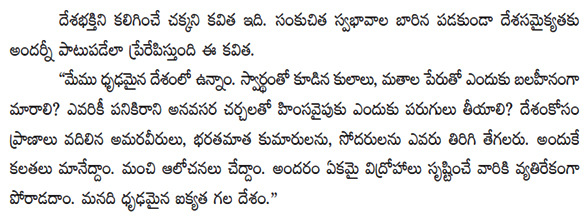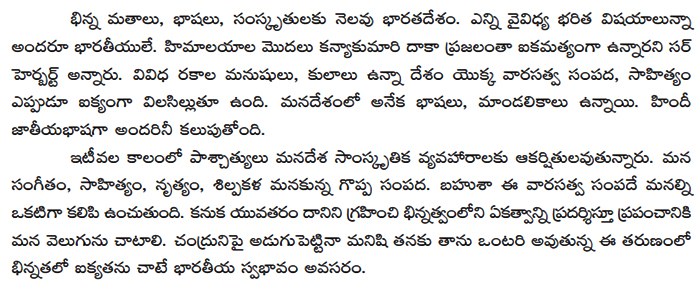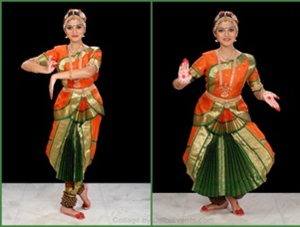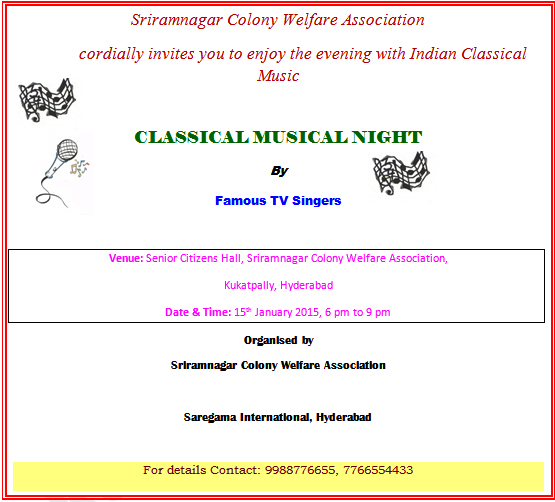Nation and Diversity
Sakshi Education

UNIT-7
Nation and Diversity
A.Reading:
My Childhood
APJ Abdul Kalam is an inspiring personality. He was born in a middle class Tamil Muslim family in Rameswarm. Developed step by step and finally he became President of India. Here the lesson is taken from his autobiography, ‘Wings of Fire’. In this part he described his childhood. It was pre-independent India. Kalam had three close friends, Ramananda Sastry, Aravindan and Sivaprakasan. They all belonged to orthodox Hindu Brahmin families. But they did not show any difference. They all sit together in school. Sometimes they dined together in their houses. Even his science teacher Iyer invited Kalam for dinner.
One day a new teacher separated Kalam from the boys and ordered him to sit in last bench. In the evening the brahimin’s father Lakshman Sastry summoned the teacher and made him apologise. Kalam’s first earning experience on tamarind seeds is interesting. After Second World War he left his parents for further studies in Ramanathapuram.
Glossary
Erstwhile ( adj) : former
Undistinguished (adj) : not very interesting, successful or attractive
Ancestral (n) : the race of people that you come from
Austere (adj) : simple and plain
Orthodox (adj) : following closely the traditional beliefs and practices of a religion
Summon (v) : to order somebody to come to you
Conviction (n) : the act of finding somebody guilty of crime
Segregation (n) : the policy / act of separating people
Conservative (adj) : opposed to great/sudden social change
Ritual (n) : a series of actions, specially as a part of religious ceremony
Perturb (v) : to make worried/ anxious
Confront (v) : to deal with a problem/ situation
Optimism (n) : a feeling that good thing will happen
B. Reading:
A Plea for India
(Poem)
We the Indians are proud to be a strong nation. Caste and regional feelings make us lose our charm. We should not spend our valuable time in unnecessary arguments. Unnecessary arguments always lead to violence. For our freedom many people sacrificed their lives. Still many things are ready to divide us and to spoil our pride. So we need dedication to unite the country despite of all narrow and selfish motives.
This anonymous poem instills patriotism in the readers. It teaches us mother India’s aim and unity.

Glossary
Plight (n) : a difficult or sad situation
Bicker (n) : argue about things that are not important
Pious (adj) : showing a deep respect for God and religion
Din (n) : a loud / unpleasant noise that lasts for a long time
Incite (v) : encourage or stir up (violent or unlawful behaviour)
Idioms and Phrasal Verbs
on high cloud (idiom) : having strong feelings of happiness or satisfaction
end up (phr.v) : finish / come to an end
C. Reading:
Unity in Diversity in India
(Poem)
India is a symbol for unity in diversity. Ours is a secular country. Many ethnic groups, different languages, cultures and traditions made it as a land of diversity. Sir Herbert Risely said "Beneath the manifold diversity of physical and social types, languages, customs and religions which strike the obsrve in India, there can still be discerned a certain underlying uniformity of life from the Himalayas to Cape Cameron."
India has many races, castes, sub-castes, nationalities and communities, but the heart of India is one. Our cultural heritage serves as a bond of unity. Though we have different languages Hindi became a national language to unite us. India has a rich cultural heritage. We are inheritors of several grand treasures in the fields of music, fine arts, dance, drama, theatre and sculpture. It is this strand of cultural unity running through the country that we are heir to. It is our duty to uphold this torch for the rest of the world.

Glossary
Ethnic (adj) : connected with / belonging to a nation, race or people that shares a cultural tradition
Myriad ( n) : an extremely large number of
babel (n) : the sound of many voices talking at time
Penetrate (v) : go into / through
Discern (v) : to know / recognize or understand
Convention (n) : the way in which most people do
Blend (v) : to mix two or more substances together
Dialects (n) : the form of a language that is spoken in one area
sages (n) : wise people
seers (n) : people who claims that they can see what is going to happen in the future
Piety (n) : showing a deep respect for ( esp: for god / religion)
Penance (n) : an act that you give yourself to do
Contemplation (n) : the act of thinking deeply about
Generous : noble, magnanimous, liberal, kind
Sacred : consecrated, divine, holy, venerable
Convey : bear, bring, carry, transmit
Rigid : firm, hard, inflexible, stiff, unyielding
Rebel : mutiny, resist, revolt, strike
Bicker : dispute, jangle, quarrel, spar
Accompany : attend, convoy, escort, follow
ANTONYMS
Ancestor x descendant
Orthodox x heterodox
Optimism x pessimism
Generosity x stinginess
Sacred x unholy, profane, secular
Rigid x flexible
Synthesis x analysis
Summative Assessment Paper-1 13E
Time: 2 Hours 45 Minutes Marks: 40
Section – A:
Reading Comprehension
(Questions 1-7): Read the following passage from "My Childhood".
I was one of the children - a short boy with rather undistinguished looks, born to tall and handsome parents. We lived in our ancestral house, which was built in the middle of the nineteenth century. It was a fairly large pucca house, made of limestone and brick, on the Mosque Street in Rameswaram. My austere father used to avoid all inessential comforts and luxuries. However, all necessities were provided for, in terms of food, medicine or clothes. In fact, I would say mine was a very secure childhood, both materially and emotionally.
The Second World War broke out in 1939, when I was eight years old. For reasons I have never been able to understand, a sudden demand for tamarind seeds erupted in the market. I used to collect the seeds and sell them to a provision shop on Mosque Street. A day's collection would fetch me the princely sum of one anna. My brother -in-law Jallaluddin would tell me stories about the War which I would later attempt to trace in the headlines in Dinamani. Our area, being isolated, was completely unaffected by the War. But soon India was forced to join the Allied Forces and something like a state of emergency was declared. The first casualty came in the form of the suspension of the train halt at Rameswaram station. The newspapers now had to be bundled and thrown out from the moving train on the Rameswaram Road between Rameswaram and Dhanuskodi. That forced my cousin Samsuddin, who distributed newspapers in Rameswaram, to look for a helping hand to catch the bundles and, as if naturally, I filled the slot. Samsuddin helped me earn my first wages. Half a century later, I can still feel the surge of pride in earning my own money for the first time.
Now, answer the following questions. Each question has four choices. Choose the correct answer and write (A), (B), (C) or (D) in your answer booklet. (4x1=4 marks)
(Questions 1-7): Read the following passage from "My Childhood".
I was one of the children - a short boy with rather undistinguished looks, born to tall and handsome parents. We lived in our ancestral house, which was built in the middle of the nineteenth century. It was a fairly large pucca house, made of limestone and brick, on the Mosque Street in Rameswaram. My austere father used to avoid all inessential comforts and luxuries. However, all necessities were provided for, in terms of food, medicine or clothes. In fact, I would say mine was a very secure childhood, both materially and emotionally.
The Second World War broke out in 1939, when I was eight years old. For reasons I have never been able to understand, a sudden demand for tamarind seeds erupted in the market. I used to collect the seeds and sell them to a provision shop on Mosque Street. A day's collection would fetch me the princely sum of one anna. My brother -in-law Jallaluddin would tell me stories about the War which I would later attempt to trace in the headlines in Dinamani. Our area, being isolated, was completely unaffected by the War. But soon India was forced to join the Allied Forces and something like a state of emergency was declared. The first casualty came in the form of the suspension of the train halt at Rameswaram station. The newspapers now had to be bundled and thrown out from the moving train on the Rameswaram Road between Rameswaram and Dhanuskodi. That forced my cousin Samsuddin, who distributed newspapers in Rameswaram, to look for a helping hand to catch the bundles and, as if naturally, I filled the slot. Samsuddin helped me earn my first wages. Half a century later, I can still feel the surge of pride in earning my own money for the first time.
Now, answer the following questions. Each question has four choices. Choose the correct answer and write (A), (B), (C) or (D) in your answer booklet. (4x1=4 marks)
- What type of text passage is this?
A. biography
B. narration
C. essay
D. autobiography
- He wrote "I can still feel the surge of pride". What is the meaning of the word ‘surge’?
A. a sudden increase
B. self confidence
C. self respect
D. important
- ‘Mine was a secure childhood’. How can you say his childhood was secure?
A. Born to tall parents
B. Living in ancestral house
C. parents looked after him very well
D. father avoided all unessential comforts
- Rameswaram was unaffected by the war. Why it was unaffected?
A. because the people there were good
B. there were number of tamarind trees
C. Jalaluddin and Samsuddin made Rameswaram unaffected
D. because it is isolated place
Answer the following questions in two or three sentences. (3x2=6 marks)
- Describe the house of the writer.
- Writer mentioned his father was austere. Do you like the quality? Why?
- In which year the writer was born? How can you justify your answer?
(Questions 8-12): Read the following poem "A Plea for India".
We, Indians are proud to be a strong nation,
Our roots, we declare, cannot be shaken.
Then why these fights,
Which leave us in poor plight?
Irrespective of our region,
Forget the castes,
Which makes us lose our charm,
Let’s ignore the selfish call of each region,
And listen for once to the call of the nation,
Why do we spend our time bickering?
When so many tasks need finishing.
Don't we have better things to do?
Than indulge in creating problems a new?
Is all this violence needed?
With the people being cheated!
Who will return this only son?
Whom she loves a ton,
Who will bring back his brother?
Whose ashes he is still to gather.
Where has all the love gone?
Which resided in the heart of all,
There is no reason to be proud,
and be on high cloud,
We have to go a long way,
We have to think seriously,
Else we end up miserably.
Now, answer the following questions. Each question has four choices. Choose the correct answer and write (A), (B), (C) or (D) in your answer booklet. (3x1=3 marks)
- What is the meaning of the word "bickering"?
A. wasting time
B. argue about unnecessary things
C. speaking more and working less
D. waiting for government
help
- "Whom she loves a ton." In this expression "she" means ……….
A. mother who lost his son in violence
B. a sister who lost his brother in violence
C. symbolises the Indian woman
D. Mother India
- What are the things make us lose our charm?
A. selfishness
B. bickering
C. regional and caste feelings
D. creating problems
Write answers for the given questions in one or two sentences (2x1=2 marks)
- Poet asks us to do few things. What are they?
- "Is all this violence needed with the people being cheated?" Why the people are being cheated?
Section – B:
Vocabulary & Grammar
(Questions 13-17): Read the passage given below. Five sentences in the passage are numbered (13-17) at the beginning. Each of these sentences has an error. Correct and rewrite them in the answer booklet. (5x1=5 marks)
(13) One day when I am in the fifth standard at the Rameswaram Elementary School, a new teacher came to our class. (14) I used to wore a cap which marked me as a Muslim, and I always sat in the front row next to Ramanadha sastry, who wore the sacred thread. The new teacher could not stomach a Hindu priest’s son sitting with a Muslim boy. (15) in accordance from our social ranking as the new teacher saw it, I was asked to go and sit on the back bench. I felt very sad, and so did Ramanadha Sastry. (16) He looked utterly downcast as I shifted to my seat in the last row. (17) The image of him weeping which I shifted to the last row left a lasting impression on me.
(Questions 18-22): Complete the passage choosing the right word from those given below it. Each blank is numbered and for each blank has four choices (A), (B), (C) or (D) given. Choose the correct answer from these choices and write (A), (B), (C) or (D) in your answer booklet. (5x1=5 marks)
Other significant features of India’s cultural unity …………………. (18) the variety, colour and the emotional richness of its dances. The country abounds in tribal dances, old-dances ………………………. (19) classical dances of great virtuosity. Throughout India, need is regarded not merely as an accompaniment to social intercourse, but also as a mode of aesthetic expression and spiritual realization. The great symbol of dance is Shiva, …………… (20) Cosmic Dancer, depicted in sculpture and poetry as Nataraja. Similarly, the classical theatre in India has a history of more than two thousand years. It was ………………….. (21) in palaces and in temples. The classical plays combined music and dance. Tragedy was, and is, still ……………………. (22) otherwise; the range of themes covered is wide.
Section C:
Creative Writing
(Discourses)
(Question 23): Write Description of any historical place you visited.
Or
Narrate any fire accident you witnessed. (10 marks)
(Question 24): Everyday is a special day. We come across many new things, May be happy or unhappy. Diary is a wonderful record to preserve our feelings. Write a Diary entry from your life. (5 marks)
Paper –I
Answers
Section-A:
- D
- A
- C
- D
- It was ancestral house, which was built in the middle of the nineteenth century. It was a fairly large pucca house, made of limestone and brick, on the Mosque Street in Rameswaram.
- Leading a simple life is called austerity. I like that because people feel unhappy when they want more than their needs. Our necessities are limited. Running after luxuries always leads to unhappiness.
- He was born in 1931. In this passage he mentioned that he was eight years old when the Second World War broke out in 1939.
- B
- D
- C
- As citizen of India we should proud of our history. We should not indulge in violence. We should remember the sacrifices of martyrs for freedom. Do needful things.
- Few people encourage violence by their selfish motives in the name of region or castes. For this violence innocent Indians are being cheated.
Section-B
- When I am in the fifth standard - when I was in the fifth standard
- I used to wore - I used to wear
- In accordance from our social ranking- In accordance with our social ranking
- He looked utter downcast - he looked utterly downcast
- weeping which I shifted - weeping when I shifted
- A
- B
- C
- C
- D
Section-C
- Description of Golkonda Fort
The Golkonda Fort is one of the famous tourist places in India. It is located near Hyderabad. Apart from historical background its structure is more interesting. Golkonda consists of four distinct forts with a 10 km long outer wall with 87 semicircular bastions (some still mounted with cannons), eight gateways, and four drawbridges, with a number of royal apartments & halls, temples, mosques, magazines, stables, etc. inside. The lowest of these is the outermost enclosure into which we enter by the "Fateh Darwaza" studded with giant iron spikes (to prevent elephants from battering them down) near the south-eastern corner.
At Fateh Darwaza can be experienced a fantastic acoustic effect, characteristic of the engineering marvels at Golkonda. A hand clap at a certain point below the dome at the entrance reverberates and can be heard clearly at the 'Bala Hisar' pavilion, the highest point almost a kilometre away.
A visit to the fort reveals the architectural beauty in many of the pavilions, gates, entrances and domes. Divided into four district forts, the architectural valour still gleams in each of the apartments, halls, temples, mosques, gardens and even stables.
Bala Hissar Gate is the main entrance to the fort located on the eastern side. It has a pointed arch bordered by rows of scroll work. The spandrels have yalis and decorated roundels. The area above the door has peacocks with ornate tails flanking an ornamental arched niche.
Toli Masjid, situated at Karwan, about 2 km from the Golkonda fort, was built in 1671 by Mir Musa Khan Mahaldar, royal architect of Abdullah Qutb Shah. The facade consists of five arches, each with lotus medallions in the spandrels. The central arch is slightly wider and more ornate. The mosque inside is divided into two halls, a transverse outer hall and an inner hall entered through triple arches.
The palaces, factories, water supply system and the famous "Rahban" cannon, within the fort are some of the major attractions.
It is believed that there is a secret underground tunnel that leads from the "Durbar Hall" and ends in one of the palaces at the foot of the hill. It is also believed that there was a secret tunnel to Charminar.
The two individual pavilions on the outer side of Golkonda are also major attractions of the fort. It is built on a point which is quite rocky. The "Kala Mandir" is also located in the fort. It can be seen from the king's durbar (king's court) which was on top of the Golkonda Fort.
The ventilation of the fort is absolutely fabulous having exotic designs. They were so intricately designed that cool breeze could reach the interiors of the fort, providing a respite from the heat of summer.
A Fire Accident
Last Sunday, when I was walking along the Shapurnagar road, I saw black smoke going up over some buildings. I understood that there was a fire accident in that area. I found people running towards the bazaar shouting ‘Fire Fire’. I then rushed to that place.
The building on fire was a big stationary ship. There was a large crowd of people. I heard the crackling sound made by the burning articles within the shop. By and by the fire was trying to spread to the neighbouring buildings. People there tried to put out the fire by sprinkling water. Due to the power cut in their efforts were limited. Another luckiest thing was only articles were burnt but not people. Actually Owner and three workers escaped the fire.
Just then, I heard the fire-engine rushing to the spot. The police also arrived in trucks. The fire-men in their dark uniforms and helmets struggled hard to control the fire. Within ten minutes another Fire-engine also came. They put out the fire in about three hours. People praised the brave men of the fire-brigade.
Then I remembered my teachers words ‘Fire is a good servant but it is a bad master.’ Everything is the shop was burnt. The shopkeeper was crying bitterly. He did not insure the shop. After discussion I realised that a fool’s cigarette stub caused this fire accident. Another thing is no shopkeeper is following fire safety rules.
- Diary Entry
Sunday
30th November, 2014.
Today we went out on a picnic to Indira Park. Our class teacher arranged a special bus. I also paid Rs. 50/- along with other students.
I took my lunch box and snacks. We started in the morning at 7 am and reached Tank bund 9 am. After taking breakfast on Tankbund we had a walk on the tank bund. We saw all the great people’s statues there.
At 12.30 pm we went to Indira Park. There we had our lunch. We all enjoyed the scenery. We played many games there. I imitated cinema actors. Everybody praised me. I shared my pocket money with my fried Rani. At 4 pm we got into the bus and started. We returned home by 6 pm.
It is a memorable day. I should a collect a group photo from class teacher.
-Kantha
Summative Assessment Paper-II 14E
Time: 2 Hours 45 Minutes Marks: 40
Section – A:
(Questions 1-7):
Read the following passage.
We had been longing to make a trip to Andaman; and Dad made it possible for us during the last summer holidays. Soon after the examinations were over, Mom made preparations for the trip. On the 25th of April, we took the Pinakini Express from Vijayawada and reached Chennai Central by 1 p.m. after lunch we hired a taxi for the port.
In the evening we boarded a ship for port Blair, the capital of the Andaman and Nicobar Islands. The ship looked much bigger than our school building. It had four storeys. It set out after sounding a loud horn. People who had come to see off their friends and relatives cheered them up by waving their hands. My sister Amala and I too waved our hands while Mom and Dad smiled at us.
Tall buildings, cell towers and factory chimneys began to vanish gradually. After a while, the twinkling lights of Chennai bade us farewell. Soon everything around us began to look dark and calm but inside the ship it was all bright and beautiful. When we closed the windows and doors of our cabin, we did not feel the movement of the ship.
On the second day, we came to know that we were in the middle of the sea. The weather was peasant on the sea. The day was sunny and the sea was reflecting the clouds like a flat mirror. We saw Dolphins swimming along the ship. They sprang and dived again and again. It was quite amusing.
Now, answer the following questions. Each question has four choices. Choose the correct answer and write (A), (B), (C) or (D) in your answer booklet. (4x1=4 marks)
- What is the meaning of the expression "we did not feel the movement of the ship"?
A. the ship was not moving
B. the ship was moving
C. the ship was moving but it looked like stopped
D. they were not worried about the ship’s movement
- Why tall buildings, cell towers and factory chimneys began to vanish gradually?
A. because they (writer’s family) are moving away from the shore
B. because they (writer’s family) are moving towards the shore
C. because of the light failure
D. because of the size of the ship
- ‘The sea was reflecting the clouds like a flat mirror.’ The expression is ………………
A. metaphor
B. personification
C. simile
D. onomatopoeia
- On which date they were in the middle of the sea?
A. 25th of April
B. 26th of April
C. 27th of April
D. 24th of April
Answer the following questions in two or three sentences. (3x2=6 marks)
- What were the pleasant and amusing things to the writer?
- ‘Mom made preparations for the trip’. What might be those preparations?
- There are two types of transportation to Port Blair. One is by aeroplane and another is by Ship. For a tourist which one is preferable? Why?
(Questions 8-12): Read the following passage.
Many years ago there was an Emperor who was so fond of new clothes that he spent all his money on them. One day, two men came to the Emperor’s court. "We’re weavers," they said. "We can make the most beautiful cloth in the world." The Emperor was very happy.
"Our cloth is also very special," said the men. "Only wise men can see it, fools cannot,"
"That’s very good," thought the Emperor. "When I wear clothes made with it, I will know who is wise and who is foolish."
The Emperor gave the men a lot of money. "Start weaving at once," he told them.
They set up two looms, and pretended to be very busy, though they had nothing at all on the looms. They asked for the finest silk and the purest gold thread. They put these in their own bags, and they worked at the empty looms until late at night.
Now, answer the following questions. Each question has four choices. Choose the correct answer and write (A), (B), (C) or (D) in your answer booklet. (3x1=3 marks)
- Why did the Emperor give lot of money to the two men?
A. To know who is wise and who is foolish
B. because they were top weavers of the empire
C. They used golden threads to weave
D. to weave the most beautiful clothe in the world
- Emperor said "Start weaving at once". What does the expression mean?
A. Start weaving and complete only one piece of cloth
B. start weaving immediately
C. starts weaving and stop not till the completion
D. start weaving in one day
- According to the passage ……………………….
A. The emperor was wise and the weavers were fools
B. The weavers were wise and the emperor was fool
C. The emperor and weavers were wise
D. The emperor and weavers were fools
Write answers for the given questions in one or two sentences (2x1=2 marks)
- As per weavers who could see the cloth and who could not see it? Was it really true?
- Something is the passage is illogical. What is that?
Section-B:
Vocabulary and Grammar
(Questions 13-17): Read the following passage given below focusing on the underlined parts and answer the questions given at the end as directed. (5x1=5 marks)
Soon (13), I came to what seemed like a huge white ball. When I touched it, it felt very smooth. It was so high that I could not see the top of it, and it was more than fifty paces (14) round. There was no door on any side, and it was too smooth to climb. Suddenly, the sky above me became dark, as if a huge (15) cloud was covering it. Looking up, I saw that the darkness was cause (16) by the shadow of a huge bird that was flying towards me. I had often heard sailors talk of a great and wonderful (17) bird, called a ‘roc’. This must be a roc, I thought, and this huge ball must be its egg!
- Choose an appropriate synonym from the given options.
A. after some time
B. continue
C. shortly
D. almost
- What is the meaning of the expression "fifty paces"?
A. fifty feet
B. fifty meters
C. fifty centimeters
D. fifty steps
- Choose an appropriate antonym from the given options.
A. tiny
B. high
C. giant
D. white
- Choose the correct form of the word.
A. causing
B. caused
C. casual
D. casually
- Choose the superlative degree of the word.
A. more wonderful
B. wonderfullest
C. most wonderful
D. much wonderful
(Questions 18-22): Complete the passage choosing the right word from those given below it. Each blank is numbered and for each blank has four choices (A), (B), (C) or (D) given. Choose the correct answer from these choices and write (A), (B), (C) or (D) in your answer booklet. (5x1=5 marks)
First, I collected a number ………………. (18) large diamonds. These I put in my wallet and tied the wallet to my waist. Next, I tied one of the large pieces of meat to the middle of my back with my turban. I then lay down with my face to the ground, ……………. (19) waited there. There was the sound of huge wings …………….. (20) me. Then I felt myself lifted up and carried to the top of the rocky walls of the valley. Soon I was in one of the nests. The merchants were surprised to ………………. (21) me there, and when they heard my story, they helped me to find …………. (22) ship to go home. When I got back to Baghdad, I was a very wealthy man. I gave large amounts of money to the poor and lived peacefully in my own home.
- A. from
B. over
C. off
D. of
- A. and
B. or
C. but
D. of
- A. round
B. around
C. surround
D. circled
- A. see
B. saw
C seen
D. seeing
- A. no article
B. a
C. an
D. the
Section C:
Creative Writing
(Discourses)

(Question 23): There are number Classical dance forms in India. Report any Classical Dance performance you attended or imagine that you attended to a classical dance performance watched on TV and Report it.
Or
Letter to your friend on it (10 marks)
(Question 24): Imagine that you are an active member in cultural committee of your colony and your committee is going to organise classical music concert. Prepare an Invitaion card for that programme (5 marks)
Paper –II
Answers
Section-A:
- C
- A
- C
- B
- The second day weather was pleasant on the sea. Dolphins swam along the ship. They sprang and dived again and again. It was quite amusing to the writer.
- Packing the luggage like clothes, towels, tooth brushes, combs, cell phones, chargers, cameras, diaries, ATM cards etc. keeping the train tickets emergency food and tablets in the bag. Informing the children about the trip and telling precautions.
- We go on tour for enjoyment. In my view ship is suitable for this place. Because we can enjoy sea weather and we can watch dolphins moving along the ship.
- D
- B
- B
- According to the weavers, only wise men could see the cloth and fools could not see it. It was not really true.
- Clothes give us protection and beauty. Believing ‘the special cloth, which can be seen by wise only’ is the most illogical.
Section-B
- C
- D
- A
- B
- C
- D
- A
- B
- A
- B
Section-C
- Magnificent Performance
Hyderabad, 20 March:
Meghana Hebbar, a highly talented disciple of Guru Maalika Girish Phanicker of Singapore, was full of effort in her marathon Bharatanatyam recital on Saturday, 20th March 2015 at Ravindra Bharathi. The Bharatanatyam recital was enriched by the dancer’s expressive skills. The techniques were applied beautifully in the performance. Her endurance levels, amazing executions and the training given by the teacher were applauded by the audience.
The recital began traditionally with a Pushpanjali followed by Ganesha stuti and other salutations. The khanda alarippu vouched for her anga shuddhi and the varieties of angikas delighted the audience. In the next Vachaspathi jathiswara, Meghana outdid herself. Intricate patterns of jathis and swaras were translated neatly into varieties of adavus.
Varna is the most challenging and considered the most reliable yardstick to measure the worth of a dancer. In an age when varnas are being shrunk in dimension, rendering the Tamil version of Tanjavur Quartet’s Todi varna inda kopam emo endan Swamy continuously for sixty plus minutes was stunning. Lord Shiva’s anger and the nayaki requesting him to grace her with his love was the theme. Opening the varna with a tana, the dancer depicted Daksha samhara, Veerabhadra and other sancharees. The nritta, nrithya and abhinaya segments were beautifully presented by the artiste. Also, the lengthy varna was a proof of her stamina.
Apt theermaanas, resonating foot work and dramatic narration of the episodes such as the nayika pining for love and the pain of separation were the other highlights.
Meghana’s Guru Maalika cast a spell on the audience with her subtle abhinaya for Hare jaya Madhava Krishna (Sri). The Krishna-Kuchela tale was portrayed with her saatwikaabhinaya. Maalika led an effective ensemble of seasoned musicians with her awe inspiring nattuvanga. From 6 pm to 9 pm no audience moved out of the hall. Art lovers never forget this in their life.
Report: Sumalatha
Letter to a friend
Friends Colony,
My Dear Chandraiah,
Suryapet,
22nd February, 2015.
Doing well and wish to know the same from you. I hope that you will pass the Public Exams with flying colours. I am sure to be the top-ranking students in Adilabad District.
I would like to share an amazing thing. Two before I was happened to see a great Bharathanatyam performance by Meghana Hebbar in Hyderabad. I went to Hyderabad to my uncle’s house. He took me to the recital.
The Bharatanatyam recital was enriched by the dancer’s expressive skills. The techniques were applied beautifully in the performance. Her endurance levels, amazing executions and the training given by the teacher were applauded by the audience.
The recital began traditionally with a Pushpanjali followed by Ganesha stuti and other salutations. The khanda alarippu vouched for her anga shuddhi and the varieties of angikas delighted the audience. In the next Vachaspathi jathiswara, Meghana outdid herself. Intricate patterns of jathis and swaras were translated neatly into varieties of adavus.
Varna is the most challenging and considered the most reliable yardstick to measure the worth of a dancer. In an age when varnas are being shrunk in dimension, rendering the Tamil version of Tanjavur Quartet’s Todi varna Inda kopam emo endan Swamy continuously for sixty plus minutes was stunning. Lord Shiva’s anger and the nayaki requesting Him to grace her with His love was the theme. Opening the varna with a tana, the dancer depicted Daksha samhara, Veerabhadra and other sancharees. The nritta, nrithya and abhinaya segments were beautifully presented by the artiste. Also, the lengthy varna was a proof of her stamina. It was magnificent performance.
Whenever you get an opportunity to watch such things don’t miss. They teach us greatness of Art and greatness of our India.
After exams you should come to Suryapet. We will spend our summer holidays here. Convey my regards to your parents and my wishes to your sister.
Yours lovingly,
Address on the cover
X X X X
To
I. Chandraiah
S/o Ramulu
Marx Colony,
Luxettipeta Post,
Adilabad Dist.
Telangana State.
- Invitation Card

Published date : 18 Dec 2014 04:59PM












